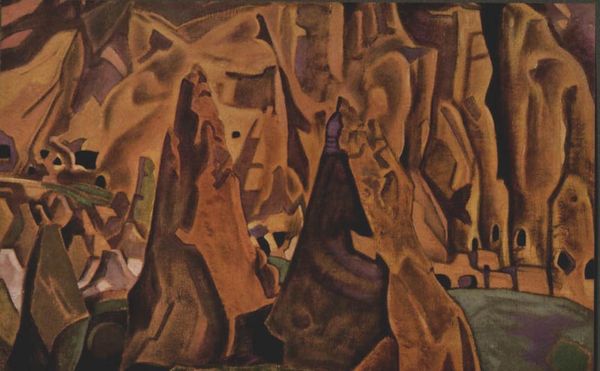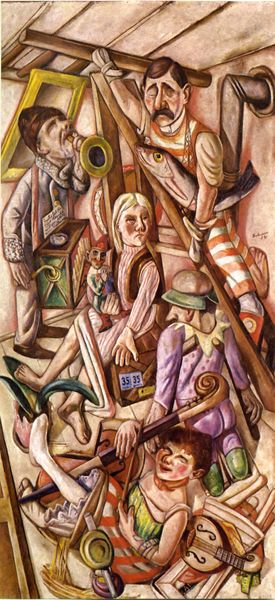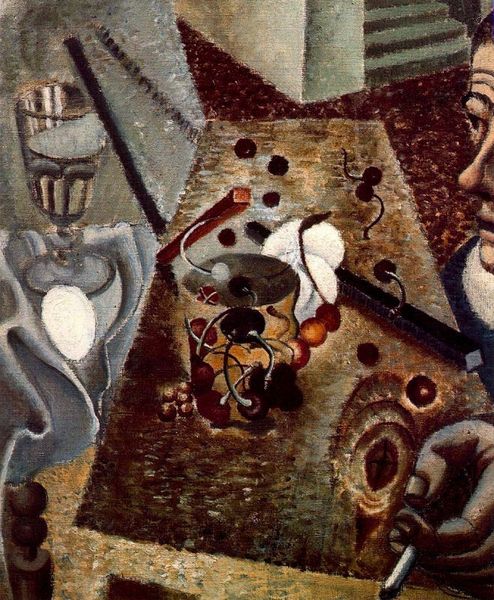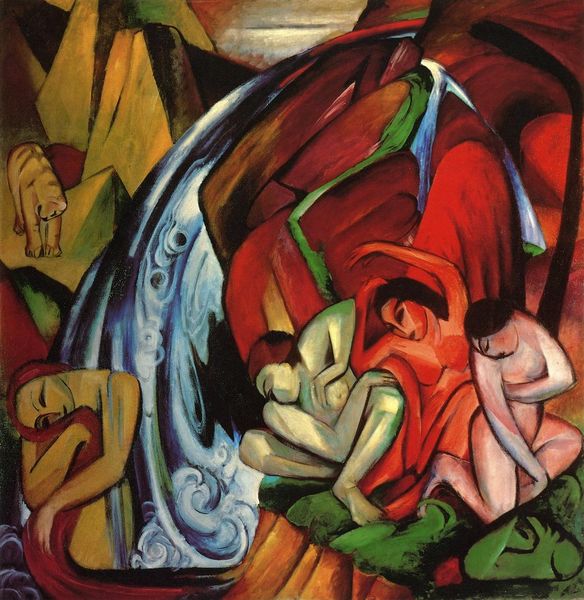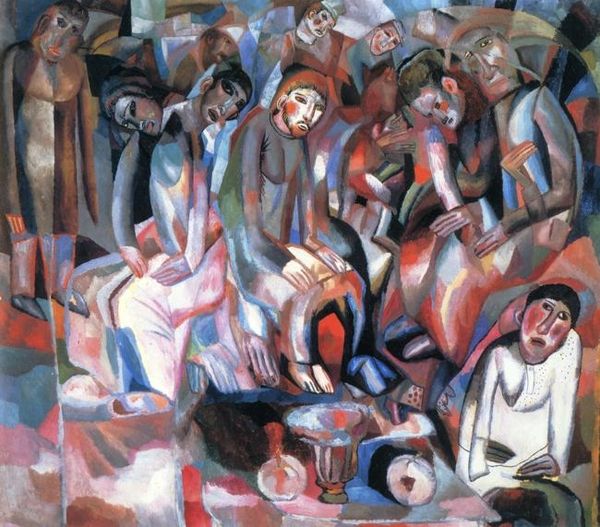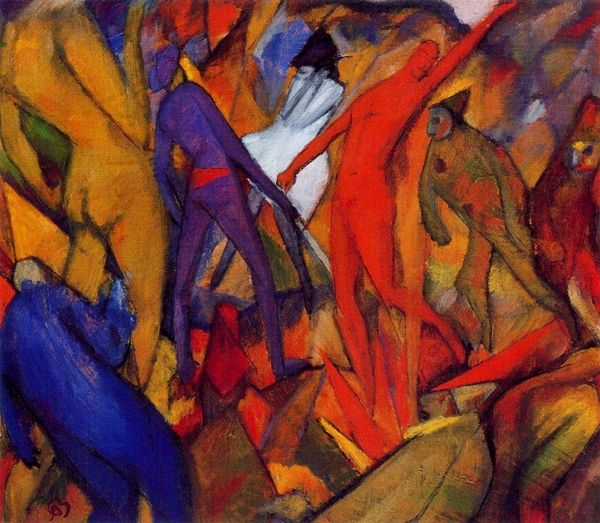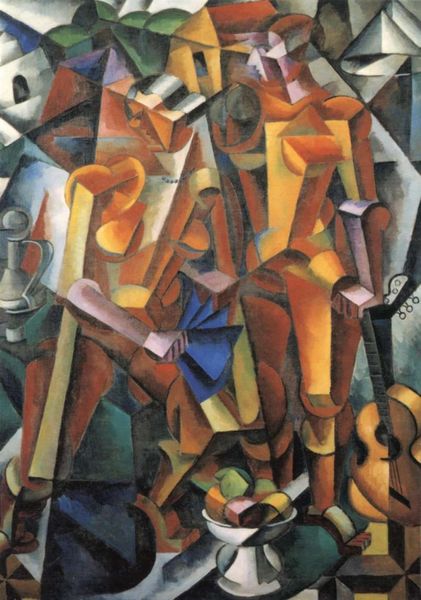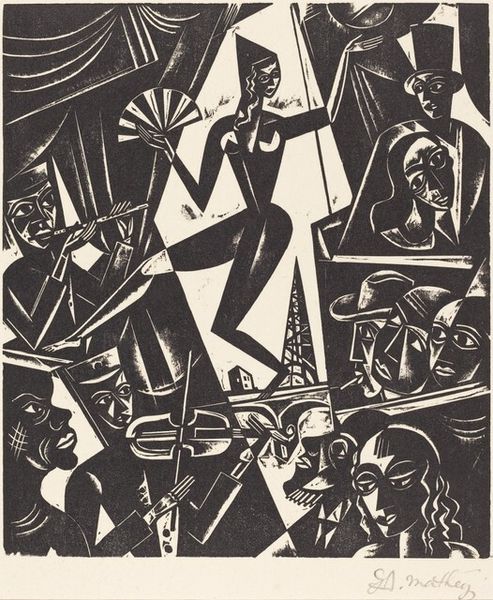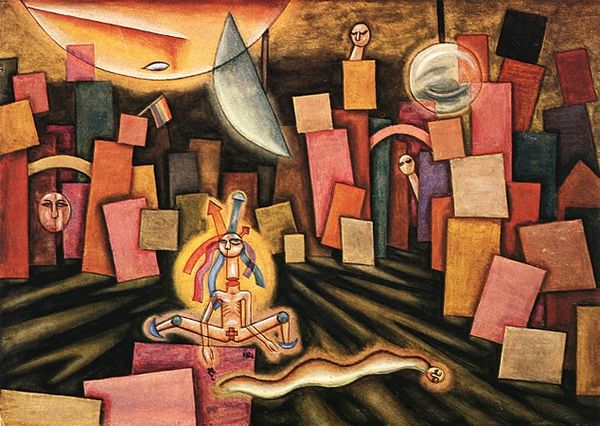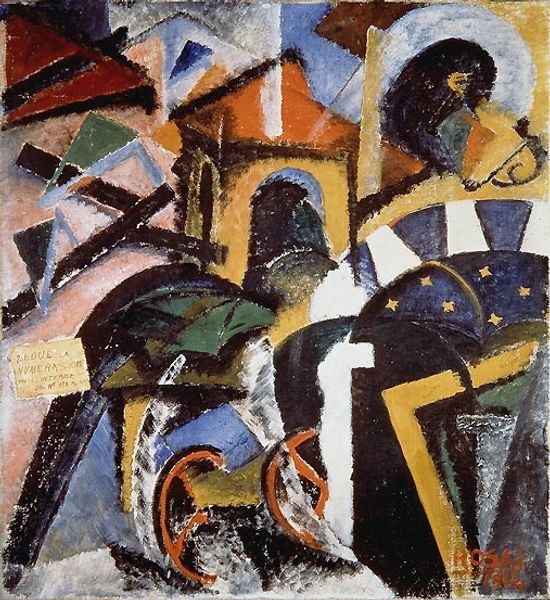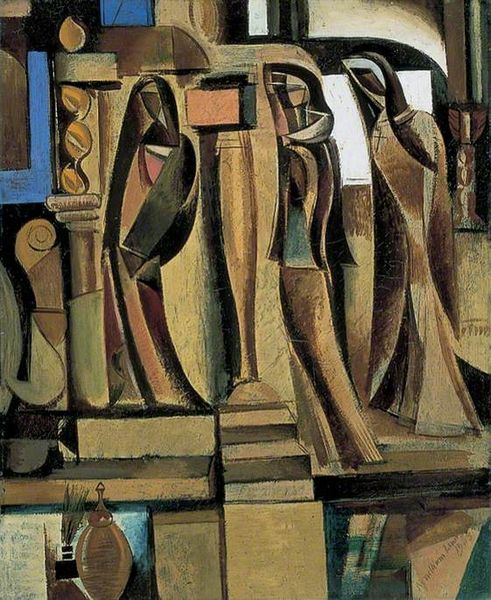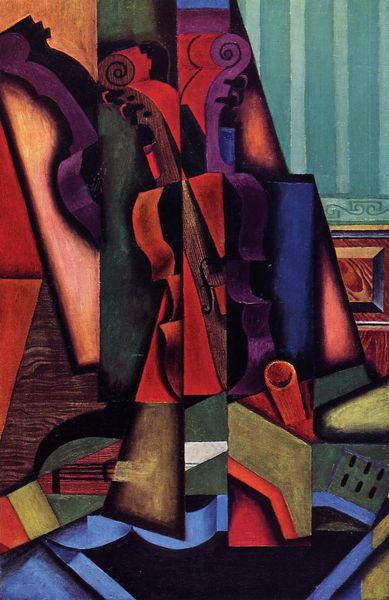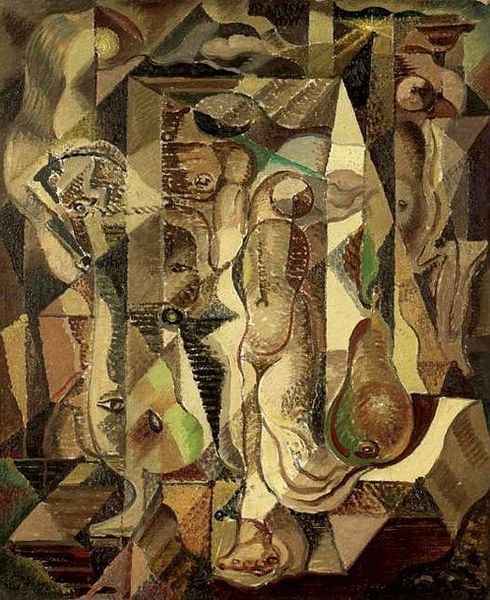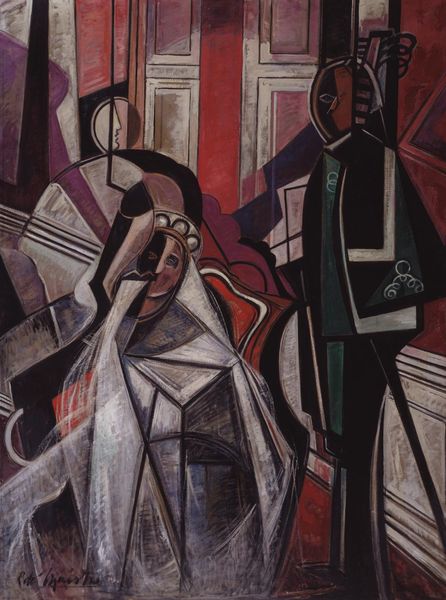
oil-paint
#
oil-paint
#
landscape
#
figuration
#
oil painting
#
expressionism
#
russian-avant-garde
Dimensions: 96.5 x 76.2 cm
Copyright: Public domain
Curator: This is Pavel Filonov's "Those Who Have Nothing to Lose," an oil painting from 1912. The figures appear trapped, almost dissected, against the backdrop of what seems to be urban decay. The rawness is intense. What do you make of it? Editor: It definitely evokes a feeling of despair. The angular forms and muted colors, they're all contributing to this heavy, almost suffocating atmosphere. How do you interpret the title in relation to the visual elements of the painting? Curator: The title is key, isn’t it? "Those Who Have Nothing to Lose." Filonov, operating within the Russian avant-garde, seems to be making a stark commentary on the pre-revolutionary working class. Notice how the bodies are fragmented, dehumanized even. This connects to the radical politics of the time, questioning the very notion of human value under capitalism. Does this context shift your initial reading of the despair you mentioned? Editor: Absolutely, I see that now. It's not just about sadness; it’s about the systemic conditions causing that despair. So, the distortion isn't just stylistic, but a critique. Curator: Precisely. Filonov uses this Expressionistic style not just for aesthetic impact, but to convey the lived experience of alienation. He's asking us to confront the social forces that create such a condition of being. Consider, for example, how these figures lack clear agency; they are confined. What kind of power dynamics are at play here? Editor: I see that now. The figures seem suspended within an environment beyond their control. This makes me think about how certain communities still experience this kind of marginalization today. Curator: Indeed. And how the 'nothing to lose' can be both a condition of utter dispossession, but also, potentially, a source of revolutionary energy. Understanding those intersections – the historical, the social, the deeply human – is what makes art so powerful. Editor: It's amazing how much history and theory is packed into this one image. I'll definitely look at Expressionism and the Russian avant-garde differently from now on. Curator: And I hope this helped you find the artivist buried in yourself.
Comments
No comments
Be the first to comment and join the conversation on the ultimate creative platform.
